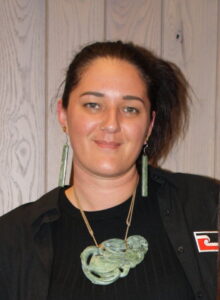Pause or not?
The murky financial waters Te Whatu Ora was navigating first emerged in April, when a series of leaked emails to RNZ revealed it had been ordered to save $105 million by July 1.
In June, Te Whatu Ora’s chief clinical officer Richard Sullivan instructed nursing and clinical leaders on June 18 to pause mid-year graduate recruitment due to budget constraints, more leaks suggested.
Anyone who had held vacancies for the graduates would now have to fill out a “request to recruit” form but only if the role was critical, communications sighted by Kaitiaki stated.
The reported student freeze hit the news after an NZNO press release on June 19.
NZNO — Tōpūtanga Tapuhi Kaitiaki o Aotearoa chief executive Paul Goulter said the decision to pause graduate recruitment was “incredibly disappointing” and a blow to the nursing workforce.
NZNO student co-leader Shannyn Bristowe said Te Whatu Ora had “trampled on the mana of the future workforce”.
Chief nurse Nadine Gray responded by saying there was no pause and graduates were being employed “where we have vacancies.
“It is important to remember that the health sector in New Zealand is bigger than just Health NZ. Graduates may also be employed in primary/community care, aged residential care or public health.”
Correspondence released to NZNO-Tōpūtanga Tapuhi Kaitiaki o Aotearoa under the Official Information Act (OIA) reveals DONs around the country in June were being denied permission to recruit new graduates.
“We have to have our NETP/NESP numbers into ACE by Friday and at this stage with no authority to approve these at a district or regional level (using vacancy) we are at serious risk of not having NETPs and NESPs for July-Sept,” one DON emailed Te Whatu Ora’s newly appointed chief nurse Nadine Gray on June 18.

They are referring to supported nurse graduate entry positions, NETP (nurse entry-to-practice) and NESP (nurse specialist-entry-to-practice, for mental health nursing).
On June 26, another DON said no graduate recruitment had been approved for their region. “At this point in time, we have not received regional approval or managed to progress current nursing vacancy forms to replace nursing staff with NETP/new graduate recruitment.”
‘The reason I ask for this clarity is that we all still seem to be in murky waters with this.’
One, on June 4, said “no [safe staffing calculator] CCDM council agreed FTE calculations are being improved for recruitment . . . so our July recruitment will be very diminished.”
Another DON on June 26 says Gray’s suggestion that graduates be “staggered” into NETP roles over time, rather employed as a single cohort, was “not workable”.
A different DON, on June 25, asks for clarity over graduate recruitment due a “disconnect” between regional recruitment panels and the ACE [national job-matching] process.
“The reason I ask for this clarity is that we all still seem to be in murky waters with this.”
A recruitment freeze for all non-frontline roles had just been put in place on June 13. Te Whatu Ora chief executive Margie Apa said it would not impact frontline services.
But a few days later on June 19, leaked news that mid-year graduate recruitment had been frozen due to budget constraints sparked an outcry.
On June 21, Gray flatly denied this, stating to Kaitiaki: “There is no recruitment pause” and graduates would be employed where there were vacancies.
‘MH&A [mental health and addictions] roles are priority roles and exempt from the current recruitment pause.’
“Any statements saying otherwise are incorrect.”

However, along with the DON comments, in a separate batch of correspondence released to Kaitiaki under the OIA, Gray refers to a “current recruitment pause” on June 24.
“Applicants for the nurse entry to specialty practice (NESP) roles will be offered positions, as MH&A [mental health and addictions] roles are priority roles and exempt from the current recruitment pause,” Gray, outgoing chief nurse Emma Hickson and strategic workforce manager Allison Plumridge wrote in a proposal to chief people officer Andrew Slater.
Asked about the email this month, Gray said she had been referring to a pause on non-clinical recruitment.
“The recruitment pause referred to in the email on 24 June was in reference to the organisation-wide pause on recruitment of hospital roles that were not patient-facing, public health roles that were not community-facing and on enabling services such as people and communications and finance.”
‘There is no funding available from the nursing workforce 2023/24 budget to provide any support to ensure new graduate nurses can be placed in roles.’
Gray said recruitment for frontline clinical roles continued “in line with budget FTEs [full-time-equivalent positions]” available. Between June and October this year, 1452 offers of employment were made to nurses and accepted, she said.
‘No funding’ for graduates
Pause or not, the challenge of finding roles for new nurses in an “environment of financial restraint” is clear in a mid-June flurry of emails, including Gray’s.
There were lengthy discussions about managing the 535 mid-year graduates who had applied for entry jobs at Te Whatu Ora through its national job-matching system, ACE (advanced choice of employment).

In an undated internal memo to Slater, Gray and Hickson refer to “well-documented” nursing workforce shortages, which meant it was “imperative” to place and retain new graduates — particularly Māori and Pacific.
But: “There is no funding available from the nursing workforce 2023/24 budget to provide any support to ensure new graduate nurses can be placed in roles”, they said.
Gray expressed hope there might be funds allocated from Te Whatu Ora’s wider 2023/24 budget. It was not clear if this happened.
But on July 17, Te Whatu Ora confirmed it had taken three in five of the mid-year graduates. This is far lower than what Apa told the Health Select Committee this month was its normal 80 to 90 per cent hiring rate for new graduates.
Backlash fears
While much is redacted, the documents also show several emails among Te Whatu Ora managers, nursing leaders and media advisors about how to publicly communicate the lack of jobs for graduates.
They also reflect a deep concern from nursing leaders and educators across the country, many of whom were worried about a backlash and wanted to know what to say to ākonga — students — about to graduate.

Minister of Health Shane Reti’s office also asked Te Whatu Ora on June 20 whether all the mid-year graduating class would be employed. “Employed somewhere?”
Gray’s agreed statement was that graduate nurses would be matched according to available vacancies but they may have to consider roles outside hospitals in primary and aged care due to high nurse recruitment in 2022/23.
Proposed solutions included a “staggered approach” to recruitment to keep within budget, expanding supported-entry places available in primary, community and mental health, financial incentives for non-hospital employers and prioritising Māori and Pacific graduates.
The correspondence shows Gray was also preparing for a similar message to end-of-year graduates — — hundreds of whom ended up missing out on jobs.





